
Roots
There is a profound inheritance woven into each strand of afro-textured hair, a lineage stretching back through generations, connecting us to the ancient rhythms of our ancestors. The very structure of this hair, distinct in its elliptical cross-section, holds tales of adaptation, resilience, and unparalleled beauty. This shape, so often misconstrued in modern narratives, is not a biological accident but a cornerstone of its magnificent character, directly informing the nuanced care it rightfully demands. To truly understand how the elliptical cross-section of afro-textured hair influences its care, we must first look to the source, to the elemental biology that shapes each coil and kink, and to the ancestral wisdom that recognized these truths long before the advent of microscopes.

The Hair’s Intrinsic Form
Each individual strand of afro-textured hair emerges not as a perfect circle, but as a flattened, oval-shaped shaft. This unique geometry is a direct consequence of the hair follicle itself, which is also elliptically shaped and curved, creating a helical, almost S-shaped journey as the hair grows from the scalp. The hair fiber’s cross-sectional shape changes along its length, exhibiting an ellipsoid and flattened form compared to hair of other ancestries. This distinctive contour causes the hair to bend and coil tightly, forming the characteristic spirals, kinks, and zig-zag patterns we observe.
It is at these points of curvature, the very bends in the strand, where the hair becomes most susceptible to mechanical stress. Research indicates that afro-textured hair breaks earlier and at a lower stress level than Caucasian and Asian hair, largely due to the small angles and tight curls that cause torsions at many regions along the hair’s length. This inherent structural vulnerability means care practices must prioritize minimizing friction and forceful manipulation, echoing the gentle hands of those who cared for hair in communal settings generations past.

Ancestral Understandings of Hair’s Essence
For millennia, within ancient African societies, hair transcended mere aesthetics. It was a potent symbol, a living archive of identity, lineage, marital status, age, wealth, and even spiritual connection. Hairstyles, meticulously crafted, could convey messages, serving as an elaborate communication system. This profound reverence meant that hair care was never a superficial act but a deeply significant ritual.
Communities intuitively understood the delicate nature of their hair, even without knowing the precise science of its elliptical shape. They recognized its propensity for dryness and breakage, observing how natural oils from the scalp struggled to travel down the spiraling shaft. This intuitive knowledge informed the development of practices and the selection of ingredients aimed at nourishing, protecting, and strengthening the hair, practices that resonate with our modern understanding of how to address the implications of the elliptical cross-section.
The elliptical cross-section of afro-textured hair creates a unique structural fragility, demanding specialized care to honor its natural resilience.
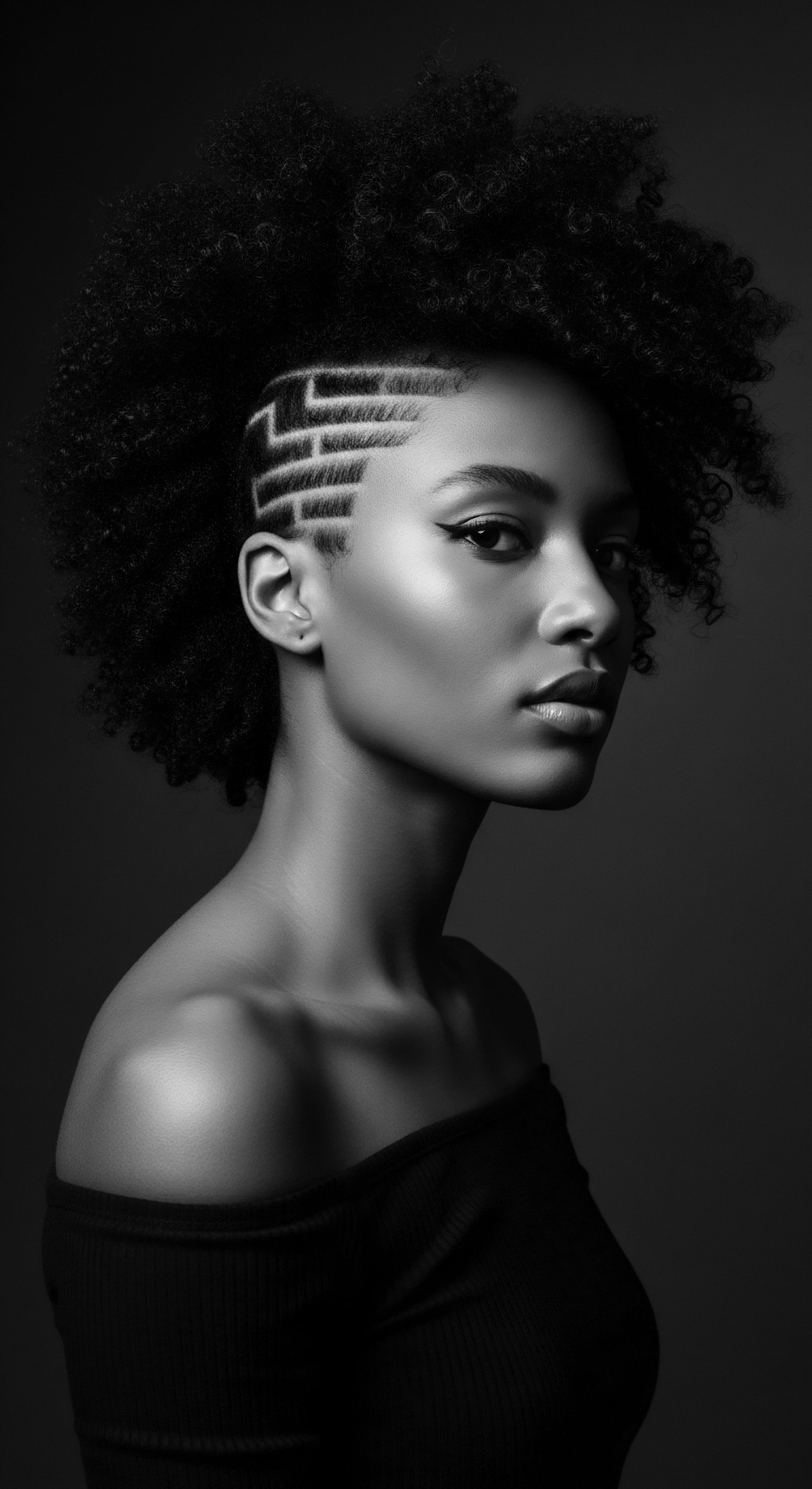
The Lexicon of Textured Hair
The language used to describe afro-textured hair has evolved, reflecting both scientific discovery and cultural shifts. Modern classification systems, like the Andre Walker Hair Typing System, categorize curl patterns from loose waves to tight coils. While such systems offer a framework for understanding curl patterns (often ranging from 3A-3C to 4A-4C for afro-textured hair), it is worth noting that they often carry subtle biases, historically positioning tighter curl patterns as less desirable or more difficult to manage.
This contrasts sharply with traditional African societies where the diversity of hair was celebrated, each texture a unique expression of communal identity and spiritual connection. The wisdom of our forebears reminds us that hair’s beauty lies not in its conformity, but in its authentic form, elliptical cross-section and all.
Beyond modern classifications, ancestral communities had their own ways of articulating hair’s characteristics, often through metaphors tied to nature or daily life. These descriptions, though not scientific in the contemporary sense, conveyed a profound understanding of hair’s feel, its response to moisture, and its styling potential. For instance, the recognition that tight coils were prone to knotting, a direct result of the hair’s elliptical twists, led to methods of gentle detangling and protective styling passed down through generations. Such historical nuances underscore that caring for this hair is not a new science, but a continuation of an ancient tradition.

Hair’s Growth Rhythm
The growth cycle of afro-textured hair, while biologically similar to other hair types, experiences unique challenges influenced by its elliptical structure. The tight curl pattern can hinder the natural downward flow of sebum, the scalp’s oil, leaving the ends particularly dry and prone to breakage. This phenomenon is exacerbated by the fragile points of torsion along the hair shaft. Consequently, the growth rate may appear slower due to significant shrinkage, where the coiled strands draw up, masking their actual length.
Historically, communities would have observed this, intuitively seeking ingredients and practices that counteracted dryness and supported hair health. They would have used natural butters, oils, and powders to assist with moisture retention, directly addressing the hydration challenge posed by the hair’s morphology.
The inherent qualities of hair from African ancestry include a higher lipid content compared to Asian and European hair. Yet, despite this, afro-textured hair is frequently described as dry. This seemingly contradictory fact is a direct consequence of the hair’s structural nuances ❉ the very curvature and spiral follicles create areas of weakness where moisture can escape, making it more fragile and prone to breakage, thereby contributing to dryness. This understanding underscores why moisture replenishment has always been, and remains, a cornerstone of care for this hair type.
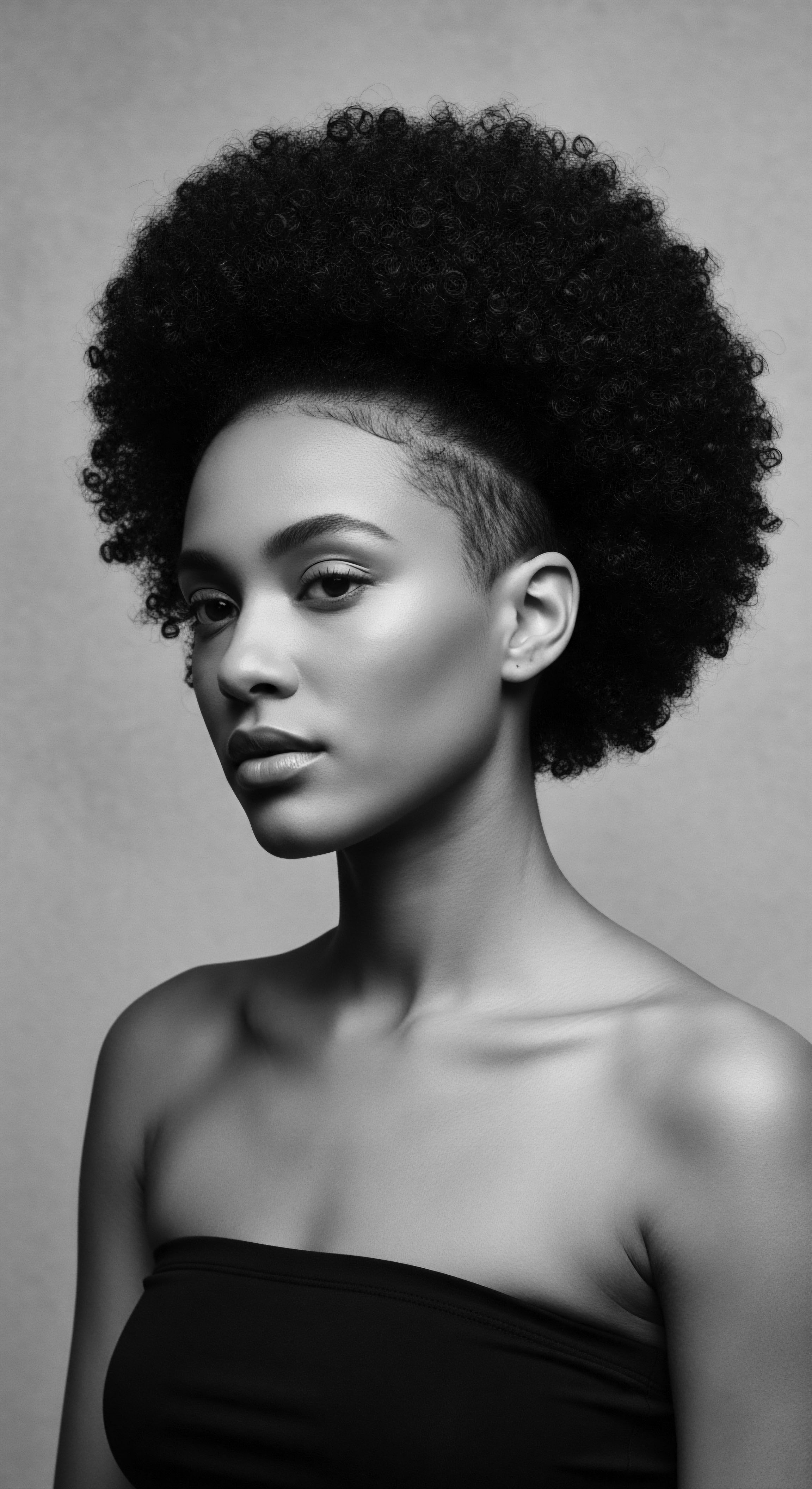
Ritual
The understanding of afro-textured hair’s elliptical cross-section has, whether consciously or intuitively, shaped styling practices across centuries. From the communal braiding circles in ancient villages to contemporary salons, the manipulation of coiled strands has always been an art informed by the hair’s inherent characteristics. The fragility at each bend of the elliptical shaft means that deliberate, tender methods are paramount, allowing hair to flourish rather than succumb to strain. This is a continuum of care, a living legacy connecting past ingenuity with present wisdom.

Protective Styling Lineage
Protective styles, deeply rooted in African tradition, represent a direct, intuitive response to the structural properties of afro-textured hair. Recognizing the hair’s susceptibility to breakage, especially at the points of its elliptical bends, ancestral practices focused on methods that minimized daily manipulation and exposure to harsh elements. Cornrows, braids, and twists were not only aesthetic expressions but also practical solutions for preserving hair health. These styles, some taking hours or even days to create, were also significant social rituals, a time for community bonding and the transmission of ancestral knowledge.
The practice of braiding, for instance, offered both protection and a unique form of communication, with intricate patterns conveying status, lineage, or even escape routes during periods of enslavement. Enslaved women, stripped of so much, continued to care for their hair with ingenious methods, crafting combs from available materials and using scarves to protect their strands. This historical resilience highlights the enduring power of protective styling as a heritage practice.
The continued relevance of these styles is evident today, with modern research validating their benefits. By tucking away the hair and reducing friction, protective styles aid in moisture retention and breakage prevention, directly addressing the challenges posed by the hair’s elliptical form. However, a deeper understanding of the hair’s fragility at its bends also informs modern stylists to avoid excessive tension that could lead to conditions like traction alopecia, a contemporary echo of the delicate balance our ancestors understood.
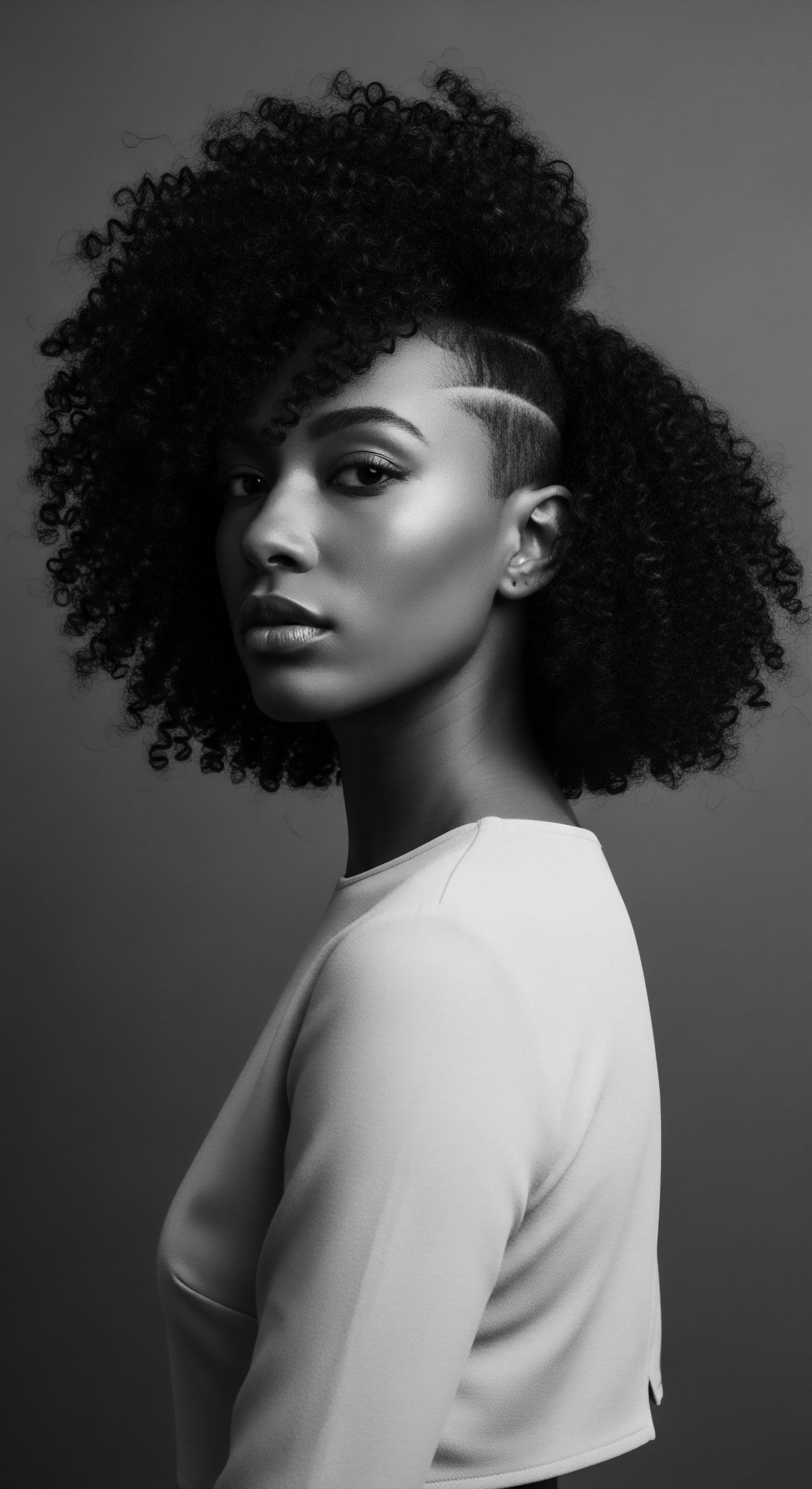
Natural Styling and Defining
Defining the natural curl, coil, or kink of afro-textured hair is a dance with its elliptical shape. The tight curl patterns, while beautiful, can make it difficult for natural oils to travel down the hair shaft, leading to dryness. This inherent characteristic necessitates methods that encourage moisture distribution and minimize frizz.
Ancestral practices often involved the liberal application of natural butters, herbs, and powders, which both moisturized and lent themselves to defining the hair’s natural form. These traditional ingredients, many still revered today, provided the slip and emollients necessary to work with the hair’s natural curvature rather than against it.
The challenge of detangling, a common experience for those with afro-textured hair, is directly linked to the elliptical shape and tight coiling, which cause strands to form knots and tangles readily. Historically, wide-toothed combs, often crafted from wood or bone, were essential tools, used with a gentle hand and perhaps the aid of water or natural oils. The emphasis was always on patience and minimal tension. Today, finger-detangling or using specific wide-tooth combs and detangling brushes with ample conditioner continue this tradition of careful manipulation, a direct response to the hair’s structural delicacy.
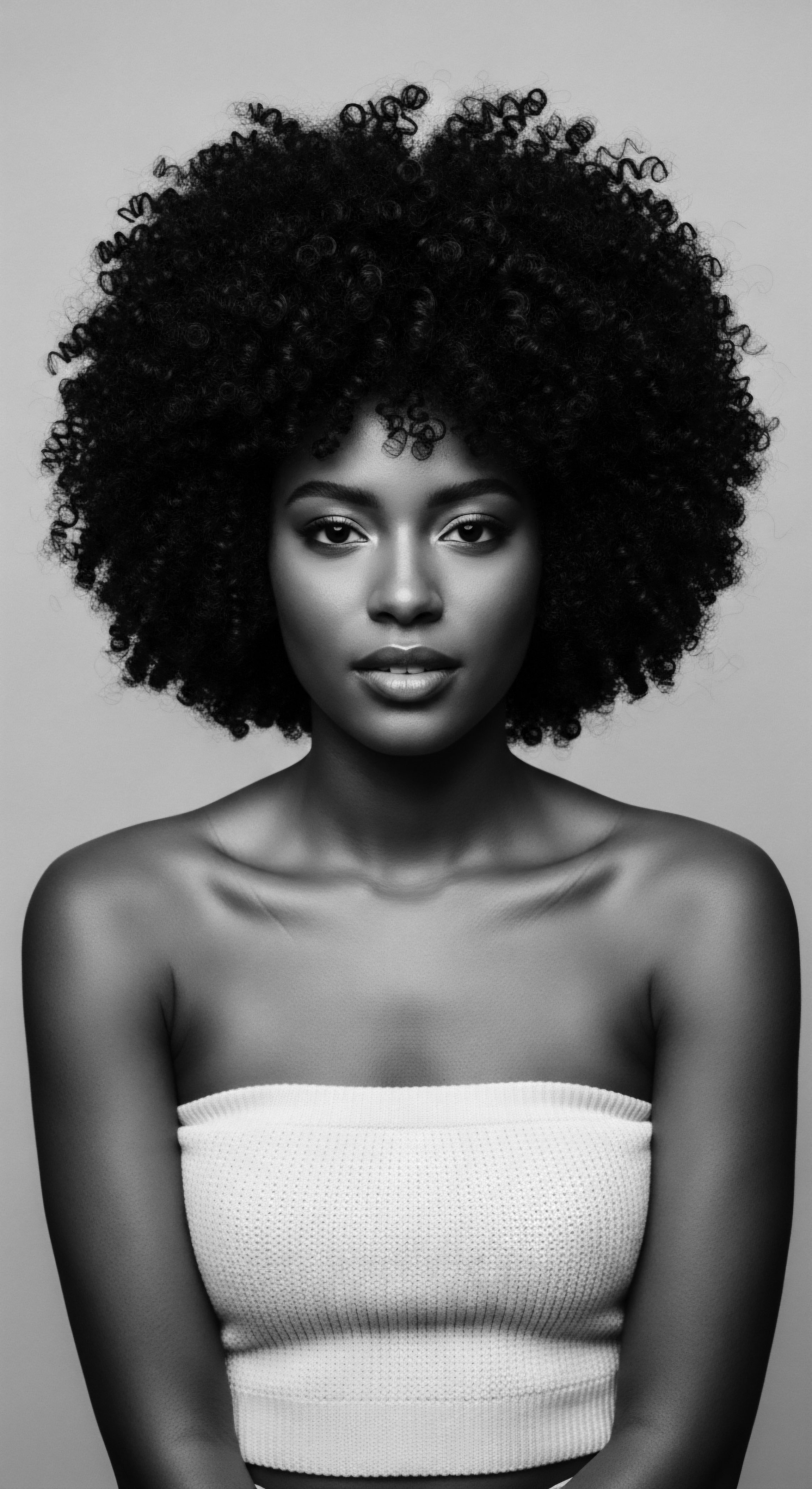
The Hair’s Toolkit
The tools used for afro-textured hair care are an extension of this historical understanding. From ancient times, combs with wider teeth were a necessity, designed to navigate the tight coils without causing breakage. These implements were not just functional; they were often objects of artistry, passed down through generations.
Modern tool selection for afro-textured hair continues to prioritize gentleness and efficacy in navigating its unique cross-sectional properties:
- Wide-Toothed Combs ❉ Essential for detangling, starting from the ends and working towards the roots to minimize tension on the scalp and fragile points of curvature.
- Detangling Brushes ❉ Designed with flexible bristles to separate strands without snagging, mimicking the careful separation of hair strands our ancestors performed.
- Satin or Silk Accessories ❉ Bonnets, scarves, and pillowcases protect hair from friction and moisture loss, preserving the hair’s delicate outer cuticle (which has fewer layers on the major axis of the elliptical shape, making it more vulnerable). This reflects the historical use of head wraps and scarves for protection and cultural expression.
The use of heat styling, such as hot combs or flat irons, represents a more recent, often fraught, chapter in textured hair care history, influenced by societal pressures. While such tools can temporarily alter the hair’s natural curl pattern, their use requires extreme caution. The elliptical shape of afro-textured hair, with its inherent points of weakness, makes it particularly susceptible to heat damage, which can lead to permanent structural alterations and increased fragility. Historical shifts show a movement away from chemical processing and extensive hot combing, returning to methods that honor the hair’s natural form and preserve its structural integrity.

Relay
The journey of understanding afro-textured hair, particularly the implications of its elliptical cross-section, is an ongoing relay race, a continuous passing of knowledge from ancestral wisdom to modern scientific inquiry. It is in this dynamic exchange that we uncover deeper dimensions of care, recognizing that ancient practices often held empirical truths confirmed by contemporary research. This section delves into the intricate relationship between the hair’s unique morphology and its holistic care, encompassing both daily regimens and historical wellness philosophies.

Nourishing the Hair’s Unique Physiology
The elliptical cross-section of afro-textured hair contributes significantly to its distinct hydration profile. Unlike rounder hair types, the tight coils and bends of afro-textured hair make it more challenging for natural oils (sebum) produced at the scalp to travel down the entire length of the hair shaft. This structural impediment means the ends often suffer from chronic dryness, leading to increased susceptibility to breakage.
This inherent dryness, a direct consequence of the hair’s shape, underpins the historical emphasis on consistent moisturizing. Ancestral communities cultivated a deep knowledge of their local botanicals, utilizing various plant oils, butters, and herbs to infuse and seal moisture into the hair. These ingredients were chosen not just for their availability, but for their emollient and humectant properties, intuitively countering the natural desiccation. Today, scientific understanding affirms these choices, recognizing that a well-moisturized strand is less prone to mechanical damage at its points of curvature.
The lipid content of afro-textured hair, while often higher overall, also contains lower levels of ceramides, which are fatty acids crucial for protecting and strengthening the internal components of hair. This deficiency contributes to increased weakness and reduced elasticity, making external moisturization even more imperative.
Building a personalized regimen for afro-textured hair is therefore a heritage practice, blending time-honored wisdom with scientific insights. It prioritizes hydration and gentle manipulation to protect the hair’s structural integrity. This often involves a multi-step approach:
- Water-Based Hydration ❉ Starting with water or water-based leave-in conditioners to provide foundational moisture, acknowledging the hair’s hydrophilic (water-attracting) nature.
- Oil Sealing ❉ Applying natural oils like shea butter or coconut oil to create a protective barrier, sealing in the moisture and preventing its rapid escape from the hair’s cuticle layers, which can be less numerous at certain points of the elliptical shaft.
- Cream Application ❉ Using creams to provide additional moisture and definition, further supporting the hair’s natural coil pattern and reducing friction between strands.
This layered approach, sometimes referred to as the L.O.C. (Liquid, Oil, Cream) or L.C.O. method, mirrors the multi-faceted care found in ancestral practices, where diverse natural ingredients were often combined to achieve optimal results.

The Nighttime Sanctuary
The care of afro-textured hair extends beyond the waking hours, finding a critical space in nighttime rituals. The elliptical cross-section and tight coiling make the hair particularly vulnerable to friction from absorbent surfaces like cotton pillowcases, which can strip away moisture and exacerbate tangling and breakage. Recognizing this fragility, ancestral communities often employed head coverings.
Scarves, wraps, and later, specially constructed bonnets were not merely decorative; they served as vital protective measures, preserving moisture and preventing mechanical damage. This practice stands as a powerful testament to the foresight and dedication our forebears demonstrated in protecting their crowns.
The wisdom embedded in bonnet use is now scientifically validated. Satin and silk fabrics create a smooth surface, drastically reducing friction, which in turn minimizes breakage and helps the hair retain its natural moisture and oils. This simple yet profound ritual helps to maintain the delicate balance of hydration that afro-textured hair, with its unique structural needs, so desperately requires. It prevents the hair from drying out overnight, ensures coils remain defined, and reduces the need for excessive manipulation in the morning, thereby protecting the hair’s inherent fragility at its structural bends.
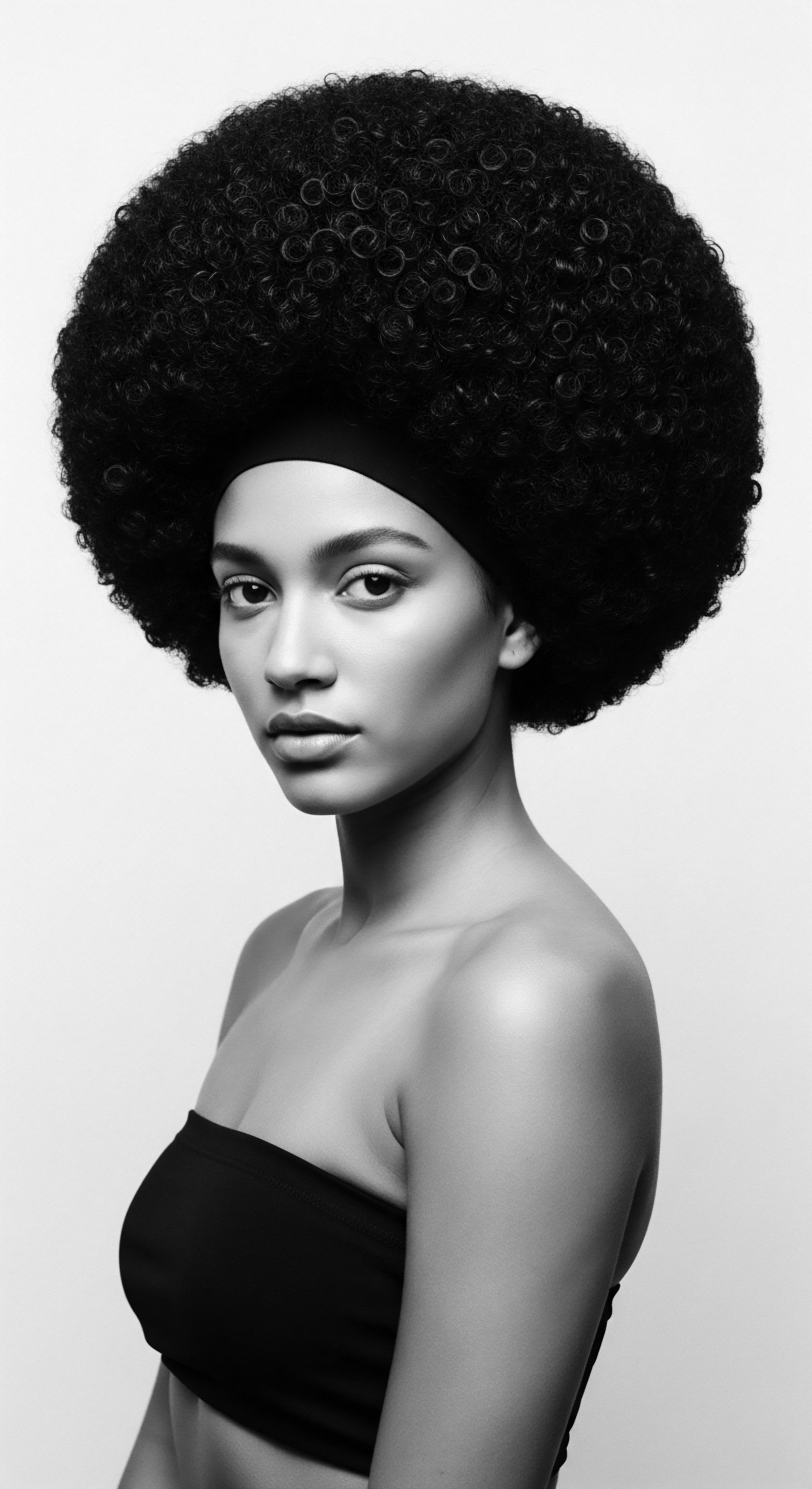
Addressing Hair Concerns with Ancient Wisdom
Understanding the elliptical cross-section is foundational to addressing common concerns related to afro-textured hair, such as dryness, breakage, and scalp health. The tight coiling, a direct result of this shape, can lead to product buildup on the scalp if not properly cleansed, contributing to conditions like seborrheic dermatitis. Historically, herbal rinses and scalp massages were employed to maintain a healthy scalp environment, demonstrating an understanding of the interconnectedness of scalp and hair health.
The inherent fragility of afro-textured hair, amplified by its elliptical bends, means that practices that minimize tension and chemical alteration are paramount. Historically, communities often avoided harsh substances, relying instead on natural preparations. The shift towards chemical relaxers in more recent history, while driven by societal pressures, introduced new challenges. These chemical treatments significantly alter the hair’s disulphide bonds, further weakening the already delicate structure and increasing its susceptibility to breakage, especially at the transition point between treated and virgin hair.
| Ancestral Practice Communal Detangling Sessions with Oils |
| Scientific Explanation of Elliptical Hair Connection Minimized mechanical stress on fragile elliptical bends, promoting easier separation of tightly coiled strands. |
| Ancestral Practice Head Wraps and Scarves for Sleep |
| Scientific Explanation of Elliptical Hair Connection Reduced friction against absorbent surfaces, preserving moisture and preventing cuticle damage on the less-layered elliptical shaft. |
| Ancestral Practice Use of Natural Butters and Plant Oils |
| Scientific Explanation of Elliptical Hair Connection Provided deep hydration and sealed moisture, countering the inherent dryness caused by inefficient sebum distribution along coiling, elliptical strands. |
| Ancestral Practice These interwoven practices highlight a timeless understanding of textured hair's needs, passed down through generations. |

The Holistic Dimension of Hair Wellness
Beyond the physical attributes, the care of afro-textured hair is deeply intertwined with ancestral wellness philosophies. In many African traditions, the hair, positioned as the highest point on the body, was regarded as a sacred antenna, a conduit to spiritual realms and ancestral wisdom. Care practices thus extended beyond mere hygiene, serving as acts of energetic sovereignty and spiritual connection. Neglecting hair, or damaging it through harsh treatments, was seen as symbolically severing one’s connection to heritage.
This holistic view suggests that addressing the physical needs of hair, including those stemming from its elliptical cross-section, is also an act of self-reverence. The psychological and emotional healing that accompanies reclaiming and caring for natural hair is a powerful act of resistance against historical attempts at cultural erasure. It is a restoration of pride, agency, and an embodiment of ancestral gifts. The decision to embrace one’s natural coils, despite societal pressures for straightened hair, becomes a profound statement of identity, echoing the defiance of the Black Power and “Black is Beautiful” movements.
One profound example of this resilience and deep connection can be found in the ingenuity of enslaved Africans. During the transatlantic slave trade, when many were stripped of their identity, enslaved women found clever ways to preserve their hair heritage. It is recounted that some would braid rice seeds into their hair before escaping, transforming their hair into a means of survival and a symbolic map for freedom.
(University of Salford Students’ Union, 2024) This ingenious practice speaks volumes about the intimate relationship between hair, its structure, and ancestral wisdom. The tightly coiled, elliptical hair provided a secure vessel for these precious seeds, illustrating how its physical properties were adapted for life-sustaining purposes, a remarkable instance of hair’s utility beyond adornment.
The elliptical cross-section of afro-textured hair underpins a care philosophy rooted in moisture retention and gentle handling, a wisdom passed down through generations.
The ongoing dialogue between scientific discovery and ancestral knowledge continually deepens our appreciation for textured hair. Modern research, by identifying the specific vulnerabilities and strengths conferred by the elliptical cross-section, offers a scientific language to describe what our ancestors knew intuitively ❉ this hair requires a particular kind of reverence, a tender attentiveness that safeguards its structural integrity and honors its profound cultural legacy. The wisdom of daily oiling, protective styling, and scalp care, informed by the hair’s unique form, ensures that each coil and kink can truly thrive, carrying forward the narratives of strength and beauty from past to present.

Reflection
The journey through the very core of afro-textured hair, observing how its elliptical cross-section influences every facet of its care, truly reveals a narrative far richer than mere biology. It becomes a profound meditation on how heritage breathes life into scientific understanding. Each coil, each curve, whispers stories of survival, artistry, and resilience, a living archive of a people’s journey. The inherent structural qualities of this hair type are not vulnerabilities but rather calls for a particular kind of reverence, a thoughtful approach that prioritizes hydration and gentle manipulation.
It is in this careful tending, this deep respect for the hair’s ancestral blueprint, that we truly connect with the ‘Soul of a Strand’. This understanding, passed down through generations and now illuminated by modern inquiry, invites us to not just care for our hair, but to honor the enduring legacy it embodies.

References
- Byrd, A. & Tharps, L. L. (2001). Hair Story ❉ Untangling the Roots of Black Hair in America. St. Martin’s Press.
- Draelos, Z. D. (2013). Shampoos, conditioners, and camouflage techniques. Dermatologic Clinics, 31(1), 173-178.
- Johnson, T. & Bankhead, C. (2014). The African American Woman’s Guide to Healthy Hair. N/A
- Loussouarn, G. et al. (2005). African hair morphology ❉ An electron microscopy study. International Journal of Dermatology, 44(s1), 2-6.
- Martin, G. (2025). Afro-Textured Hair Consultant. Martin Hair & Scalp Clinics.
- McMichael, A. J. & Williams, K. A. (2015). Contemporary African-American Hair Care Practices. Clinics in Dermatology, 33(3), 337-343.
- Monsanto, J. & Patel, N. (2025). The Science of Afro Hair ❉ Why It Needs Special Care. MyHair.ai.
- Randall, S. (2025). Historical Perspectives on Hair Care and Common Styling Practices in Black Women. MDEdge.
- Rodrigues, L. (2024). The Genomic Variation in Textured Hair ❉ Implications in Developing a Holistic Hair Care Routine. MDPI.
- The Solid Bar Company. (n.d.). Essential Guide To Curly & Afro-Textured Hair. The Solid Bar Company.
- Wong, N. Williams, K. Tolliver, S. & Potts, G. (2025). Historical Perspectives on Hair Care and Common Styling Practices in Black Women. MDEdge.
- University of Salford Students’ Union. (2024). The Remarkable History Behind Black Hairstyles. University of Salford Students’ Union.
